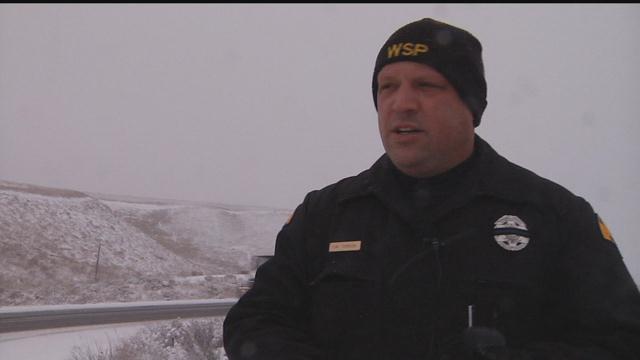
The first snow storm of the winter season is currently heading into our area, and like all of us, Washington State Department of Transportation is gearing up to make the slick roads safer.
Driving is dangerous, and when you add weather like freezing temperatures and snow, it’s time to bring out the snow plows.
“We’ve got approximately 1,100 lane miles that we take care of to include 23 interchanges,” said Mark Brewster, Maintenance Manager with WSDOT.
This is all in the Columbia Basin area and over in the Yakima Valley area. These snow plows cover around 800 miles, and Brewster says they work around the clock.
“We have 24-hour coverage,” Brewster said. “What we try to do is get our chemical out just prior to the snow and ice situation, we get the chemical down to make sure that we don’t end up with a compact ice situation.”
With that, they want drivers to be aware of two things.
“Anticipate slow moving vehicles, they all have their flashing lights and beacons on that will give you an indication that they’re making applications,” said Brewster, “but give them plenty of room given that they’re driving considerably slower than the posted speed. I want to caution you though that there are times that you will find sporadic areas of compact snow and ice.”
Trooper Chris Thorson with the Washington State Patrol also wants drivers to be aware of other things.
“When you’re driving on the highway, you always want to make sure to pay attention to your temperature gauge inside your car,” Thorson said. “Anything under 32 degrees is freezing.”
And that means the possibility of black ice. Reporter Crystal Garcia learned more about winter driving safety when she went on a ride-along with Trooper Thorson earlier this week.
“Look at this left lane right now,” Trooper Thorson said. “In the left lane we are in compact snow and ice, in the left lane my side tires are in it. Typically one secret is use your turn signal and get over in this right lane most of the trucks and traffic drive. See how much better it is versus the left lane.”
More traffic means more heat on the road, causing it to dry up quicker – so remember that the right lane is the safer bet. But that’s not all the advice Trooper Thorson has to give.
“Don’t follow cars real closely,” he said. “If you need to stop, you may slip on this wet pavement and/or if it turns into black ice, so increase your following distance.”
Most importantly, slow down – that is how you can reduce your driving risks.



